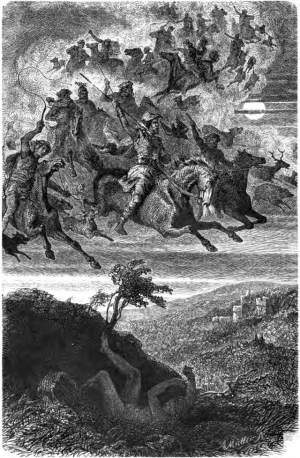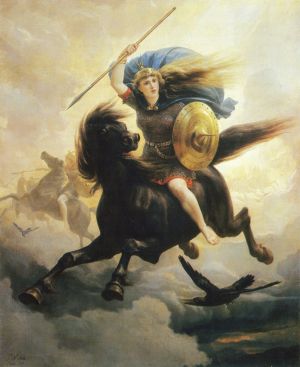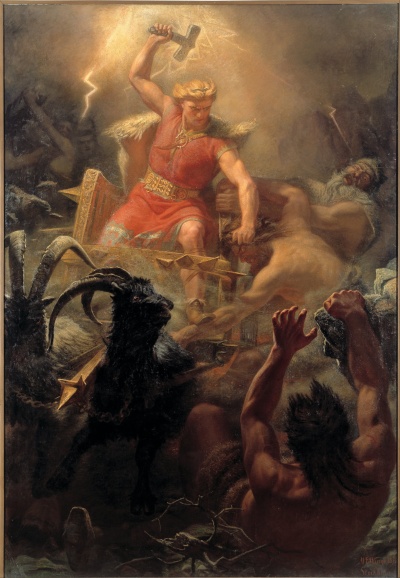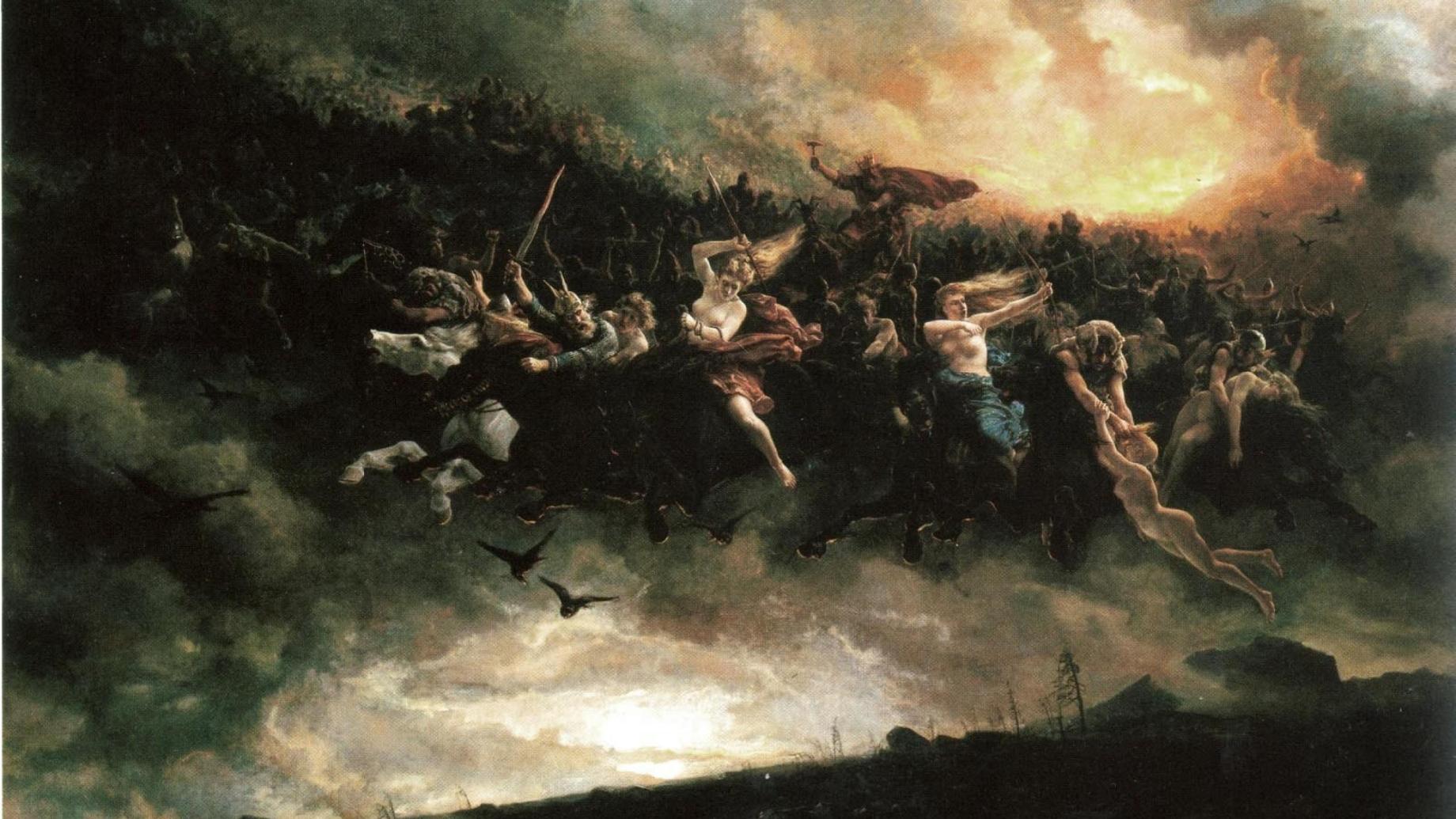“Åsgårdsreien” by Peter Nicolai Arbo, painting in oil on canvas, 1872. Currently residing at the National Gallery in Oslo, Norway. Here Thor holds Mjölnir aloft (center) as he leads a legion of men and women on a mythological hunt through the skies for Asgard.
The Wild Hunt is a well-known myth throughout much of Europe, though it goes by many names – the title Arbo gives to his painting is a common one used in his native country of Norway, “Åsgårdsreien” means “Ride of Asgard,” though this name may be a corrupted form of a version that shares a common etymology with other Wild Hunt myths: Oskoreia, which means“noisy riders”. Many terms for the myth across Germanic cultures in Europe translate roughly to “Odin’s ride”.
You may have also heard of the “ghost riders in the sky” in the United States or their distant descendant, Marvel’s Ghost Rider.

The myth itself goes something like this: in fall and winter unusually strong winds come whipping through an area, making a sound reminiscent of a great host of hunters. As Thor’s chariot was believed to be the sound of thunder, so, too, was Odin’s wagon and this great host believed to make its own distinctive sound which was associated with this phenomenon. Some tellings mention that Odin hunted with his wolves, his ravens, or other animal escorts (who made their own contribution to the howling of the wind), and the hunters in the host could include the souls of the dead, Valkyries, fairies, or perhaps lesser gods of Asgard.
The purpose of the hunt varies depending on the specific location of the teller of the myth. In some versions, the riders chase after game for sport; in others, they’re hunting maidens, nymphs, or those who disrespect the hunt itself. In Scandinavia particularly, the period around winter solstice and Christmas was noted for its association with the Hunt, and the “Yule Folk” who led it, and it’s worth noting Odin’s deep association with Yule.
Of course, a procession of spiritual beings associated in some way or another is a tradition its believers took quite seriously. As Europe was transformed into a Christian region, the association with Odin is likely responsible for the fact that the Hunts lost some of their more sacred elements. While Odin remained the head of the host, instead of mighty Valkyries or proud gods at his side, later myths might include the dishonored dead, such as drunkards or suicides.
Many tellings of the story took on a more local character, and the leader of the hunt was a famous figure of local mythology or a dearly departed hero. These could include Arthur, Charlemagne, Barbarossa, or any number of famous Swedish kings.
So then what are we to think of the inclusion of Thor in this week’s featured image as the presumed leader of the Ride of Asgard?
While the myths I’ve tracked down don’t show Odin as the exclusive leader in the hunt, the pattern seems to be that the Hunt typically uses a major chieftain as its leader. Even in the Celtic tradition where the Wild Hunt appears but which has fewer ties to Germanic mythology, the highly revered Cernunnos is most often the leader of the Hunt.

It’s also worth noting that the host appearing in the painting is a bit curious. It includes women on white horses armed with spear and bow who are presumably Valkyries (though they differ from Arbo’s other depictions of Valkyries). There are armed warriors with swords and retrieving women from the ground who could be gods or Odin’s army of the honorable dead from Valhalla, depending on how you interpret a winged helmet or a bear-skin coat. But most importantly, no one-eyed man with a wide-brimmed hat riding an eight-legged horse. And there is a large, bearded man, crowned, riding either a large steed or a chariot, holding a hammer.
Why put Thor in this painting?
Given “Åsgårdsreien’s” completion in 1872, a year when interest in ancient Norse mythology and culture was rising to new heights, it may well just be that Arbo was fascinated with Thor in particular. It could be that Arbo had encountered a specific story about Thor leading a Ride of Asgard that was simply different from the majority of surviving tales, or he imagined a new one given Thor’s particular association with weather phenomena. I’ve not found a definitive answer, so any response to the question I can offer as of today is merely speculation.
Whatever his inspiration, this is one of the more popular depictions of the Wild Hunt myth to date. It shall undoubtedly remain among the most beautiful as well.


[…] their folk tales, and their outlook on life. While some of the artwork we’ve seen has been brilliant, we also know that some of the interest sparked in the 18th and 19th century resulted in some of […]
LikeLike
[…] was also a strong association with Odin in his role as leader of the Wild Hunt and father of the slain. It’s unclear exactly what role Yule had in the cult of the dead and […]
LikeLike
[…] I’ve discussed the Wild Hunt myth previously, and mentioned its association with Yule at that time, but I want to go a bit more in-depth, especially since it’s been so long since that post. […]
LikeLike
[…] discussed Valkyries on several occasions, even trying to give a (bad) overview of their role in the Germanic conception […]
LikeLike
[…] loud songs upraising: Pushed the chief back the goblet; ‘Ho! heard ye my Norsemen? There went sounds on the night-wind, a tramp as of […]
LikeLike